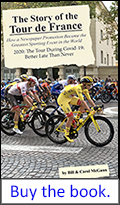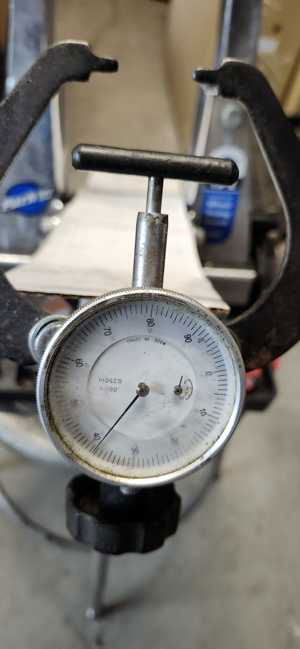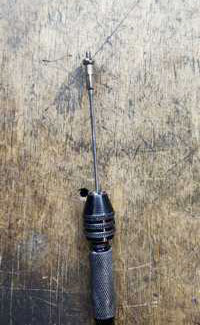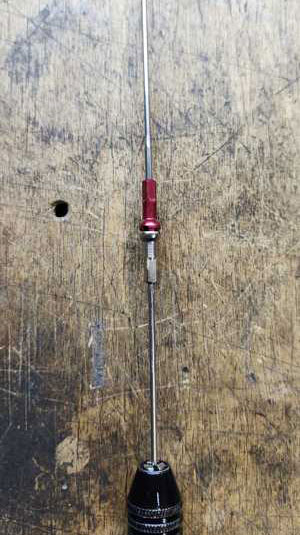

Wheel Building Tips
by John Neugent
Tech articles | Commentary articles
The late John Neugent probably knew more about bicycle wheels than anyone else. Maybe more about bikes as well. He spent his life in the bike business, at every level. He owned Neugent Cycling, a firm devoted to delivering world-class equipment at the lowest possible price. —Chairman Bill


Bill & Carol McGann's book The Story of the Tour de France, 2020: The Tour During Covid-19, Better Late Than Never is available in both Kindle eBook and Audiobook versions. To get your copy, just click on the Amazon link on the right.
John Neugent writes:
I realize most people reading this essay don’t build their own wheels, but many are interested in learning the key points. Good wheels are expensive and many want to understand the technology (or craft) that makes them special.
The saying goes that spokes should be of high and equal tension. The reasons are twofold. The higher the initial tension, the longer it will take for them to stretch and de-tension. The reason for equal tension is that if there is a spoke of high tension next to a spoke of low tension there is a tendency for them to equalize their tensions throwing the wheel out of true.
What is seldom mentioned is that the source of equal tension is radial run out. How far out of round the wheel is. This makes sense because spokes run radially out of the hub. This is complicated by the fact that it’s hard to see radial run out compared to lateral run out. I can easily see .002” of lateral run out but find it hard to see .01” of radial run out without a crutch. Note these are small tolerances.
The solution is an inexpensive $25 indicator you can buy on Amazon and glue onto your truing stand. I won’t go into the details here but I normally true to .005” for radial runout midway through the final truing process.

My dial indicator
But I put the cart before the horse. When the wheel is laced, the next most important procedure is to get all of the nipples threaded onto the spokes an equal amount. This saves lots of time in getting the radial run out done quickly. There is a very inexpensive method for this which I have never seen referenced before. I take a spoke and thread on the nipple until it bottoms out. This leaves a fair amount of threaded spoke on top to screw nipples onto.

Spoke insert tool
Screw the nipples onto the “spoke tool” until it bottoms and when threading the nipples on while lacing bottom out the spokes resulting in the nipples all being threaded on the same amount. It’s a great time save when building wheels and costs the price of a used spoke and nipple.

Threading nipple on to spoke
One final key point. I always think of spokes as being grouped in 4 different sets. The rear drive side, the rear non drive side, the front disc side, the front non disc side. On a front non disc, all the spokes are in the same set. This is because each group behaves differently and needs to be treated differently from start to finish.
Wheel building can be a very enjoyable experience. I built up a set of wheels today where the total time of tensioning and truing for both wheels was 25 minutes and they are spot on. But, it can take a long time before you can get to that level and even the best builders have issues with spokes binding and other things. I had a rear wheel the other day with 10 spokes that needed to be rethreaded. I have a $4,500 Phil Wood spoke cutting and threading tool to do that. The spokes were Sapim CX Ray spokes – generally thought to be the best in the world (and priced as such). When spokes bind, it’s possible to tighten them or loosen them but impossible to get the precision I want – which is typically 1/8 of a turn. If I am out ½ of a turn the rim can be out more than .01” radially which is out of my spec.
I hope these tips will help.
John Neugent was was one of the first to establish quality hand building in Taiwan around the turn of the century. He now owns Neugent Cycling, a firm devoted to delivering world-class equipment at the lowest possible price.







